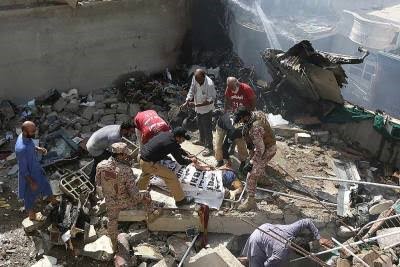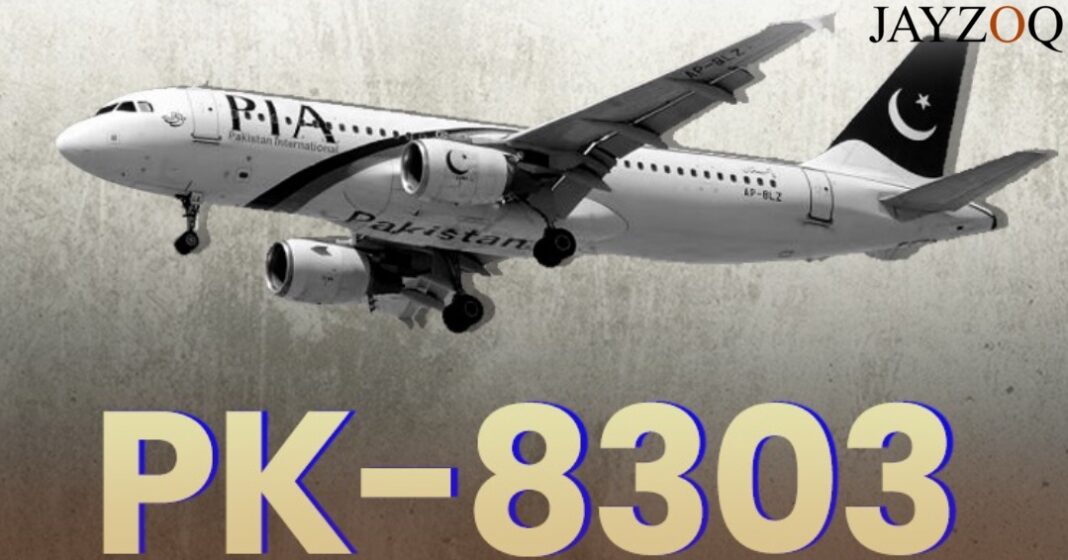May 22nd bore heartbreaking news for families of all those aboard the ill-fated flight from Lahore to Karachi, which unfortunately, wasn’t able to finish its due course, crashing into a densely populated settlement near the Karachi airport killing 97 of the 99 people onboard the plane.
PIA Flight 8303 under Captain Sajjad Gul and first officer Usman Azam was nearing the end of its 90-minute journey when the accident occurred. According to the initial investigation report of the incident put together by officials, the aircraft was trying to make another attempt at landing after the first was unsuccessful. The investigation did not reveal any material malfunction but in fact, lack of professionalism of both pilot and control tower officials was called out. The pilot did not comply with ATC’s instruction to maintain the required elevation at approach even after repeated warnings; whereas ATC’s act of allowing the aircraft to land with gross violation of landing procedures is also questionable. It is being said that had it been Dubai or any European airport, this accident could have been avoided despite the pilot’s errors as ATC would have not granted permission to land. This accident also triggered the need of upgrading CIA operating applications.
The question that arose was, whose hands were stained with the blood of the innocent victims of the unfortunate crash? Authorities scrambled to bring the situation under control with Prime Minister Imran Khan declaring an emergency in hospitals in Karachi and deploying all relief services to attend to the crash. The government announced a compensation of Rs.1 million to the victims and Rs.500,000 to each of the two survivors.

This devastating news shocked the nation and forced the authorities to investigate further into the cause of such a disaster. The Pakistani government assured full transparency regarding the undertakings of the committee and subsequently the results.
The investigation was carried out by Pakistan’s Aircraft Accident Investigation Board (AAIB). Airbus, the manufacturers of the plane, also aided the investigation with an 11-member team visiting the crash site in due course. The aircraft flight recorder was flown to France.
The engines of the aircraft made contact with the runway 3 times as suggested by marks which may have caused a substantial amount of damage to the aircraft’s engine resulting in the required amount of thrust not produced and thus the aircraft was not able to gain altitude. In the preliminary report, the actions of the air traffic controller and flight staff majorly contributed to the situation resulting in the crash. The pilot’s attitude according to the recordings was defined as ‘overconfident’. Before the first attempt at landing, the staff was notified of the overspeed and gear unsafe warning which were disregarded by the staff.

The cause of the crash was determined to be pilot inadequacy. Following the report, PIA suspended 150 of the 434 pilots. The suspension will remain in effect until further investigation is carried out into the authenticity of their licenses.
“It will totally cripple us. But we cannot take risks with this,” PIA spokesman Abdullah Khan told Al Jazeera by telephone from Karachi, where the crash took place on May 22. The airline will also look into the issue of forged licenses. Sixteen pilots had already been suspended in January 2019 under the allegation of forged licenses.
The Pakistani Aviation Minister Ghulam Sarwar Khan told Parliament how 262 of Pakistan’s active 860 pilots had a dummy candidate sit in their place. Following this report, PIA was banned from flying into the European Union on the basis of failing multiple safety tests and failure to set into motion a reliable safety management system as stated in a letter from the European Union Air Safety Agency (EASA). This decision could be appealed. It also banned the airline from flying into the United Kingdom. Later, the USA also placed restrictions on the airline.
Later during an Assembly session, it was pointed out that it is not possible for it to function properly due to unstable leadership. PIA during the past 10 years has passed leadership to 11 different individuals. PIA was listed among the 50 organizations being privatized as part of the Pakistan Tehreek-e-Insaf scheme. The government pointed out that such incidents could be avoided if the establishment had not been weakened by corruption.







